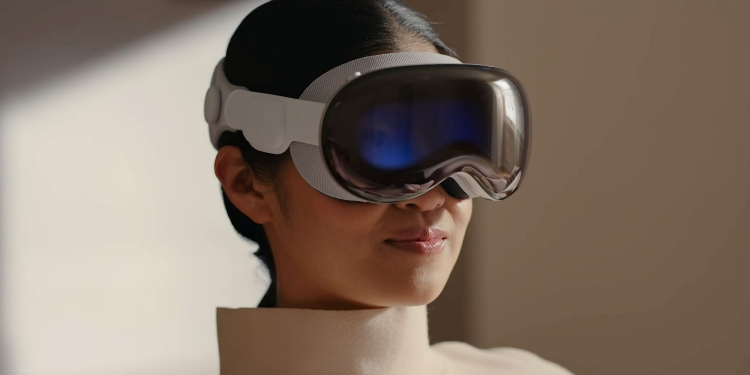After a long wait and a series of rumours, Apple has finally unveiled its first-ever mixed-reality headset that’s called the Vision Pro. According to Apple, the Vision Pro is the world’s most advanced personal electronics device ever and it runs on visionOS, which is described as the world’s first spatial operating system.

The design of the Apple Vision Pro is pretty close to early speculated renders. Similar to the AirPods Max, the Vision Pro has several “Apple Watch” design elements such as a digital crown and a physical button which allows you to capture spatial photos and videos via its built-in 3D cameras.
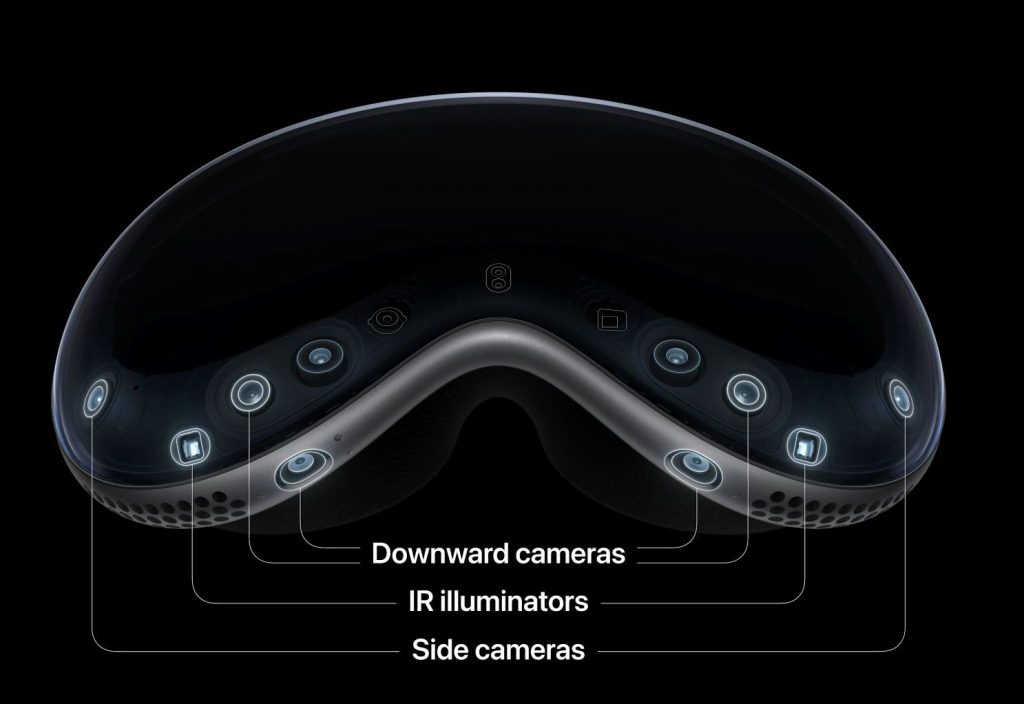
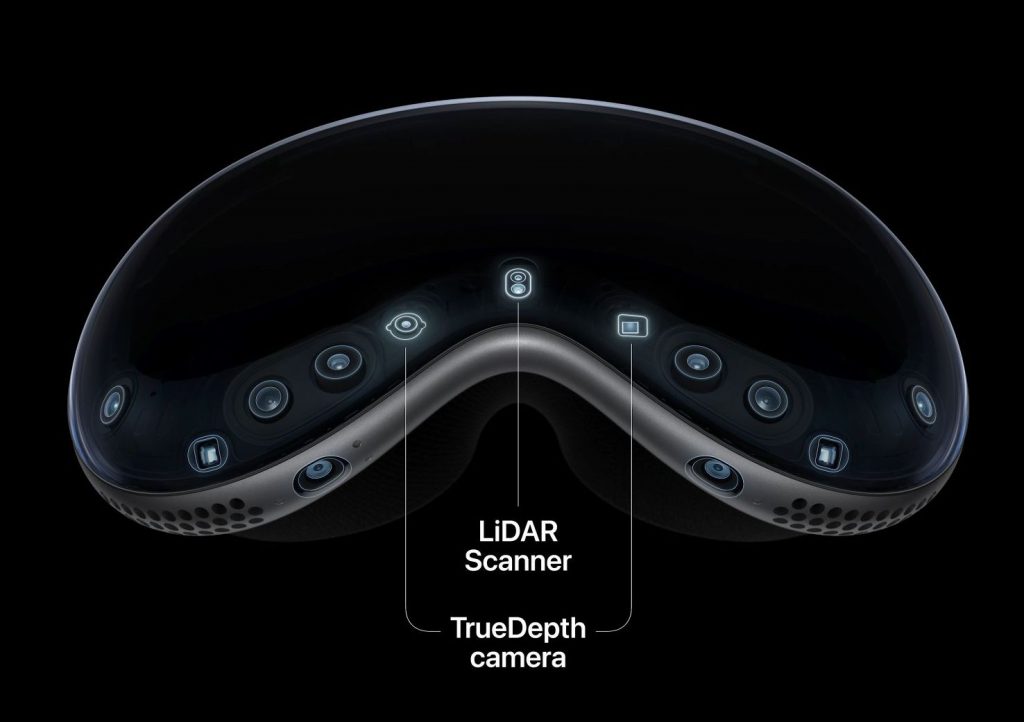
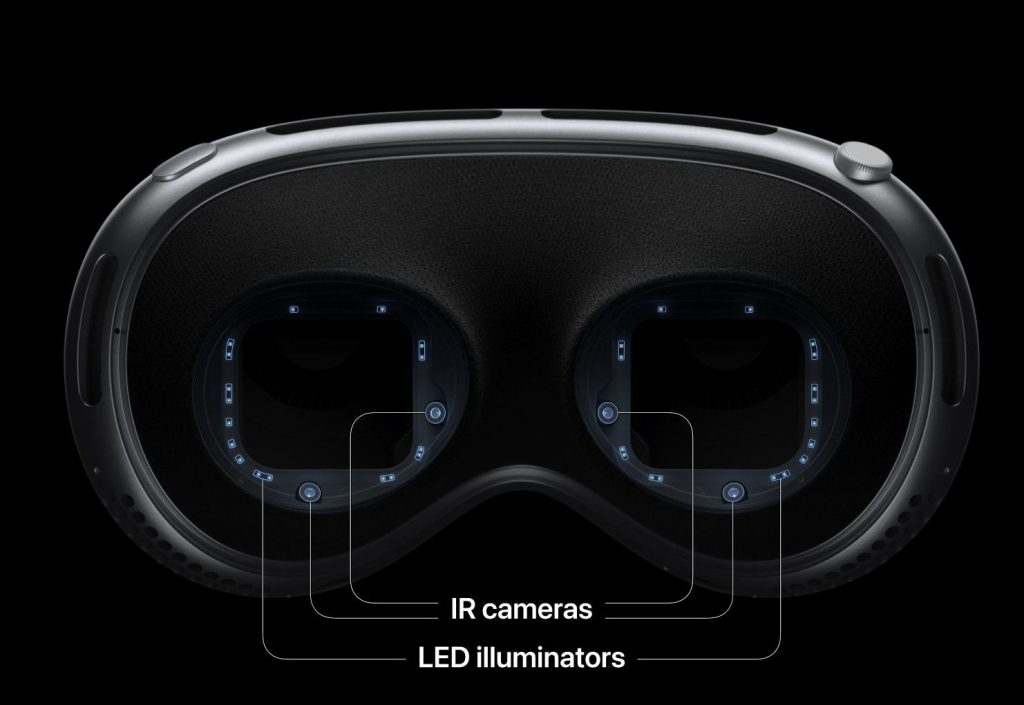
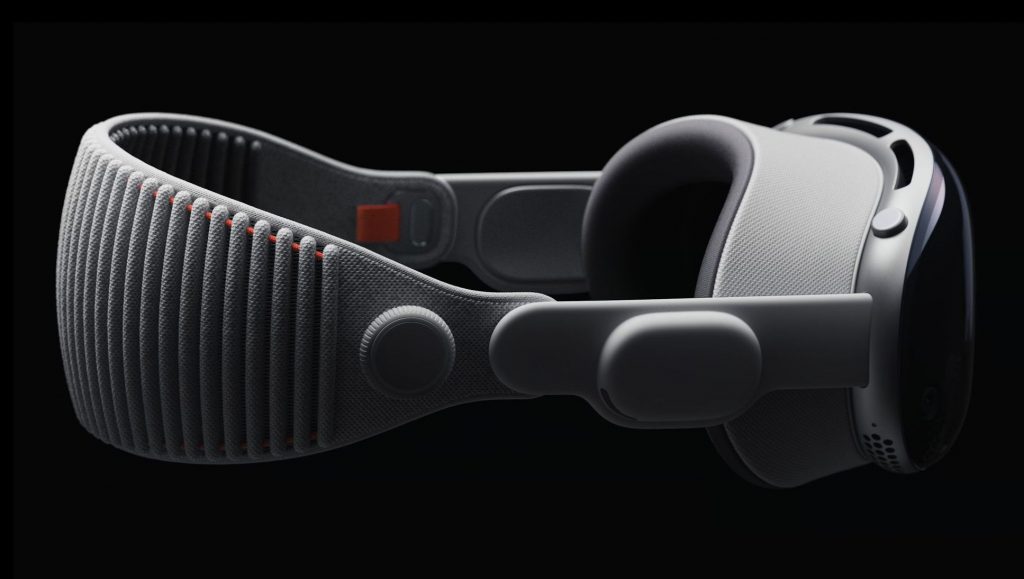
Being an AR/VR mixed reality headset, the Vision Pro comes loaded with cameras and sensors, which enables it to be used without additional controllers or accessories. Equipped with Apple’s first 3D cameras, users can interact via their eyes, hands and voice. You can browse through apps by looking at an object, tapping your finger to select or flicking using your wrist to scroll or simply using your voice for dictations.
On the inside, the Vision Pro features a micro-LED display which boasts 23 million pixels across two displays which Apple claims to be more than 4K for each eye. This enables users to transform their surroundings into a personal movie theatre with a perceived 100ft screen.
For users who wear glasses, the Vision Pro can be paired with ZEISS optical inserts which can be attached to the display for greater clarity and eye-tracking accuracy. The headset also comes with its own built-in speakers with dual-driver pods or alternatively, you can use your AirPods for audio.
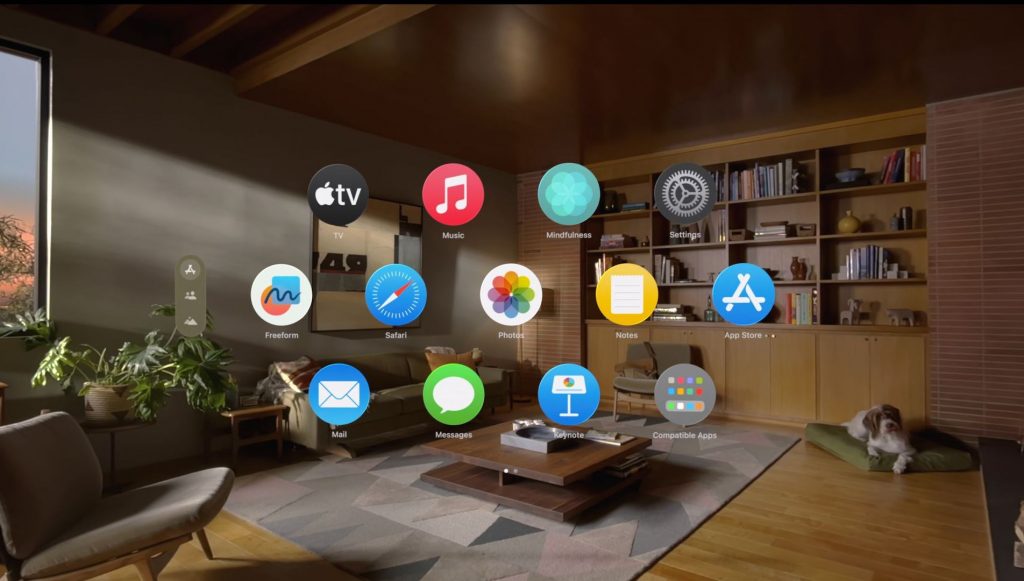
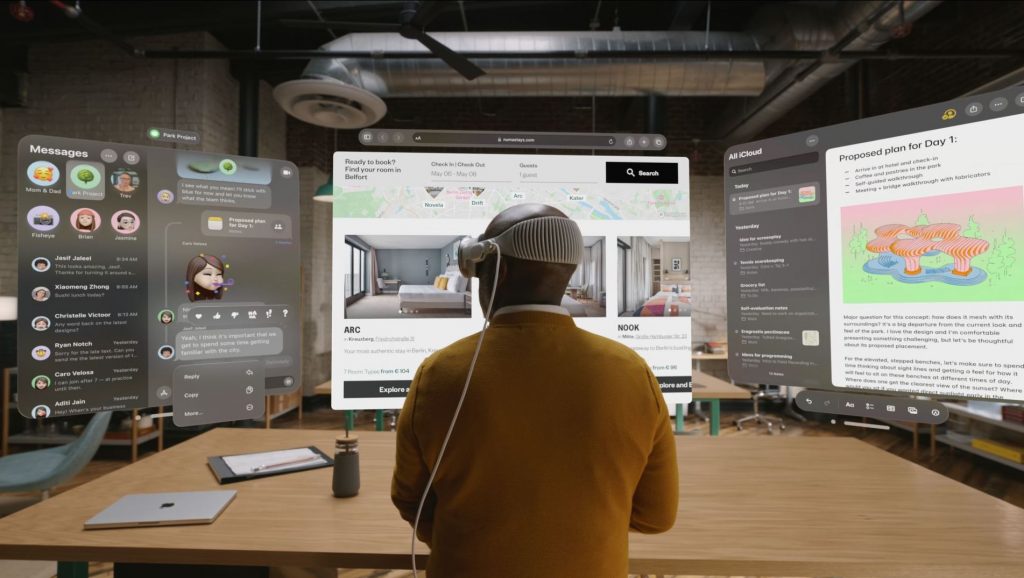
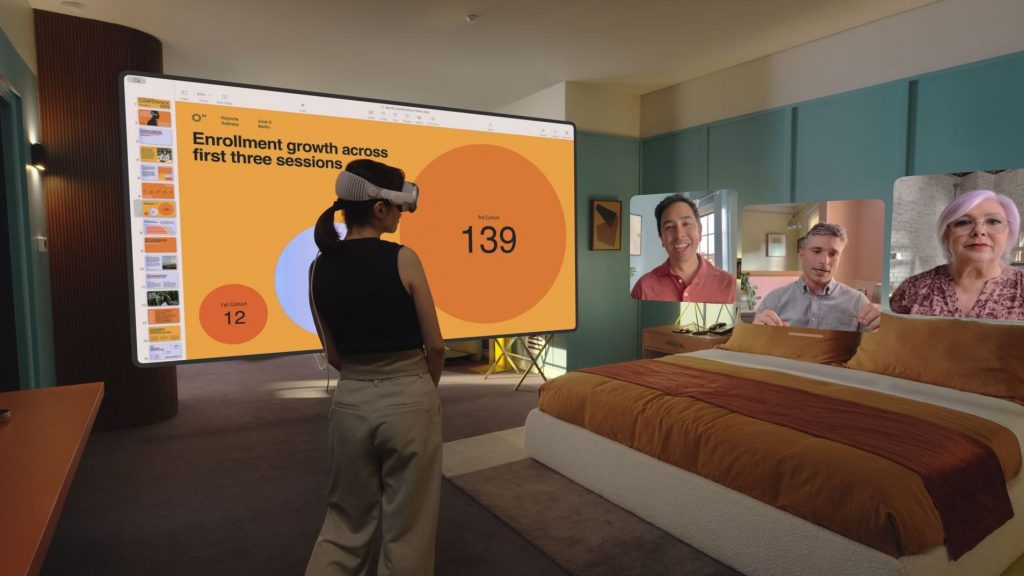
Vision Pro isn’t just for immersive entertainment, but it is also designed for productivity in mind. You can use it to launch apps in a virtual environment to run word processing, spreadsheets or browse the web, or have a video call through Zoom and Webex. What’s also interesting is that the Vision Pro also has a feature called EyeSight which allows users to be aware of their surrounding.
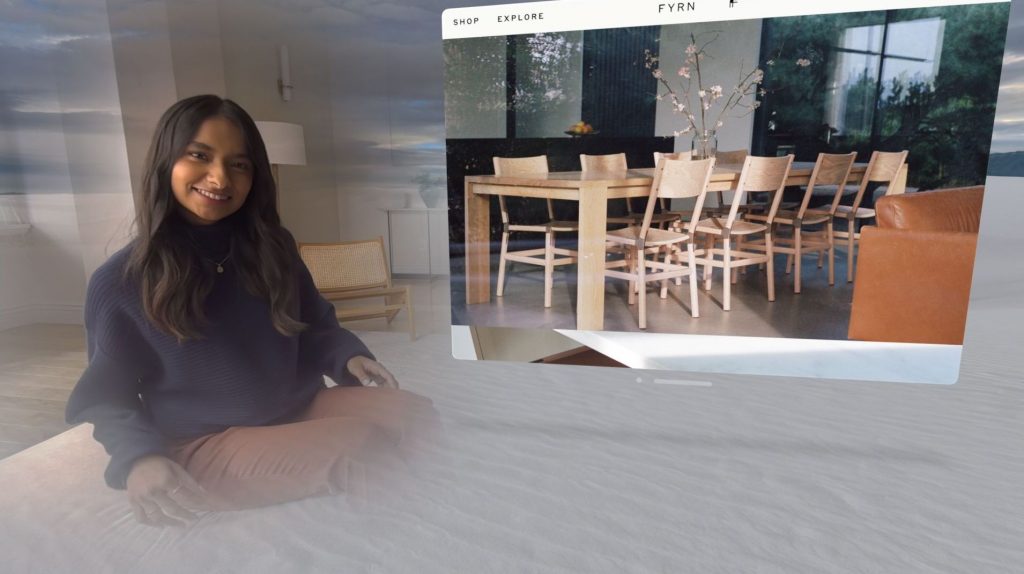
If someone approaches you, the display becomes transparent giving you a pass-thru view, while those around you will be able to see your eyes. Users will also know that you’re preoccupied as EyeSight will give a cue that you’re in the middle of something. Users can also adjust the transparency of the virtual elements through the digital crown.
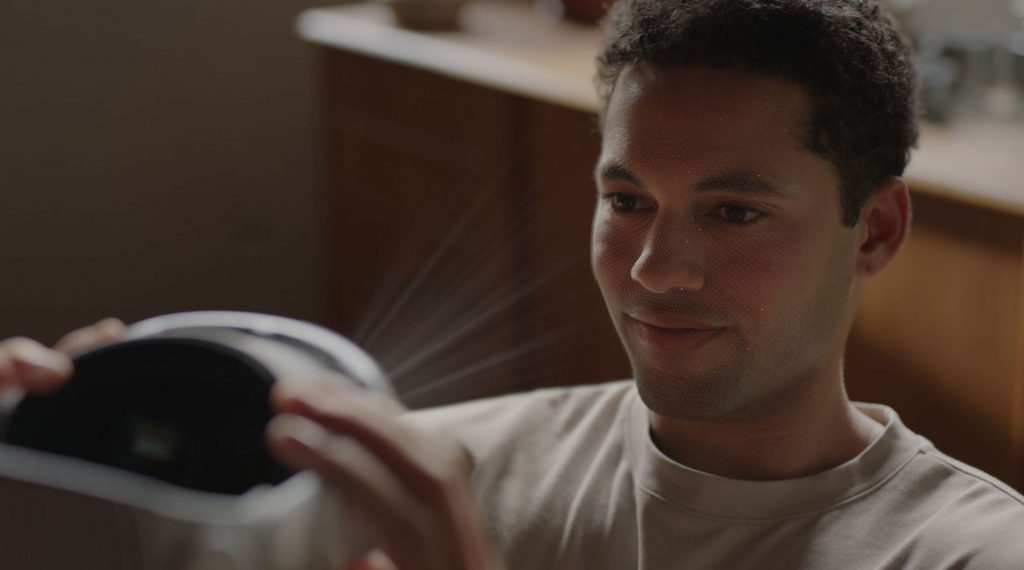
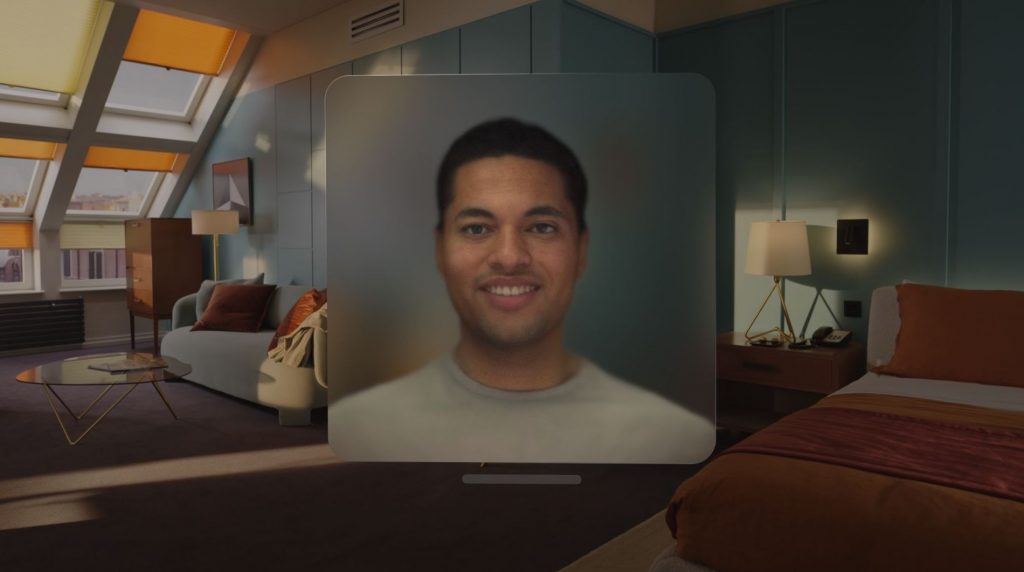
Being a device that can handle video calls, another interesting feature is that the Vision Pro can create your virtual persona so your virtual group will be able to see you without actually having a front-facing camera. This is essentially a digital representation of you for the video call as it uses machine learning to reflect your face and hand movements in real-time.
The “spatial computer” is powered by a dual-chip design which runs on an M2 chip and a new R1 chip which handles the input from 12 cameras, five sensors and six microphones to ensure the interaction and content are delivered in real-time with hardly any lag. According to Apple, the R1 chip is able to stream new images to the display within 12 milliseconds, which is 8x faster than a blink of an eye.
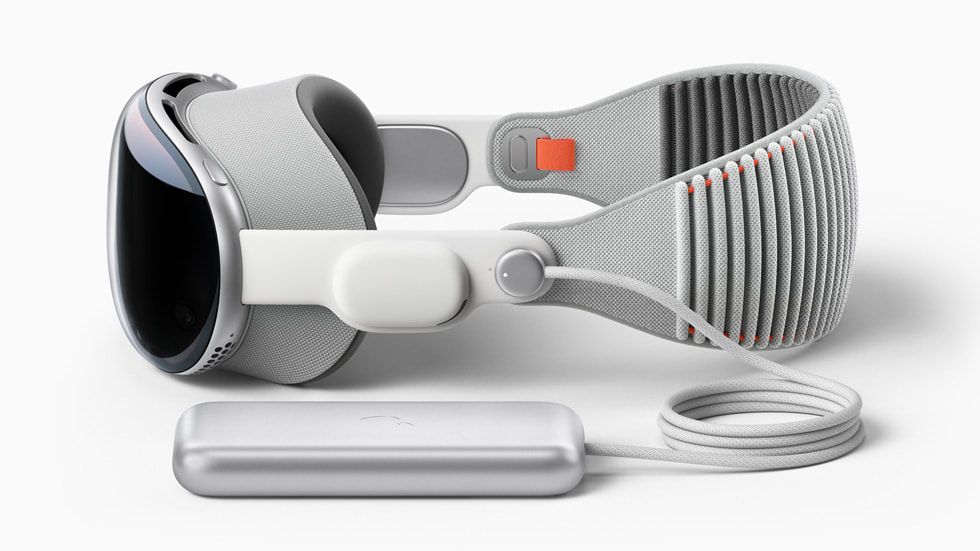
The Apple Vision Pro is said to be designed for all-day use and it can be plugged in directly. Alternatively, it can also run for up to 2 hours on an external battery pack as shown above. With any new Apple product, privacy is one of the main focuses of the Vision Pro and third-party apps will not be able to know what you’re looking at and it won’t record your surroundings. Speaking of security and privacy, the Vision Pro features Optic ID which allows you to unlock the headset by scanning your Iris with invisible LED light. Your Optic ID biometric data is stored only the device and it is fully encrypted.
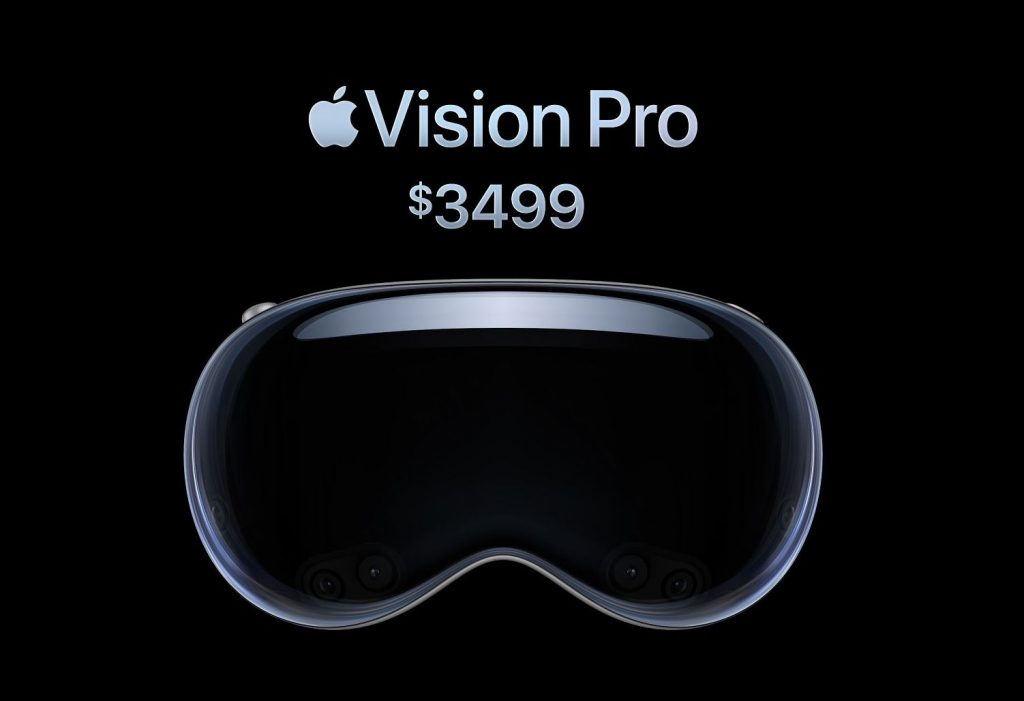
The Vision Pro is priced at a hefty USD3,499 which is currently about RM16,017. The headset will go on sale early next year. During the reveal at WWDC23, Disney announced that it will have its Disney+ streaming service available on Day 1 of the product availability. So far there are no clear details yet about its availability for Malaysia.

